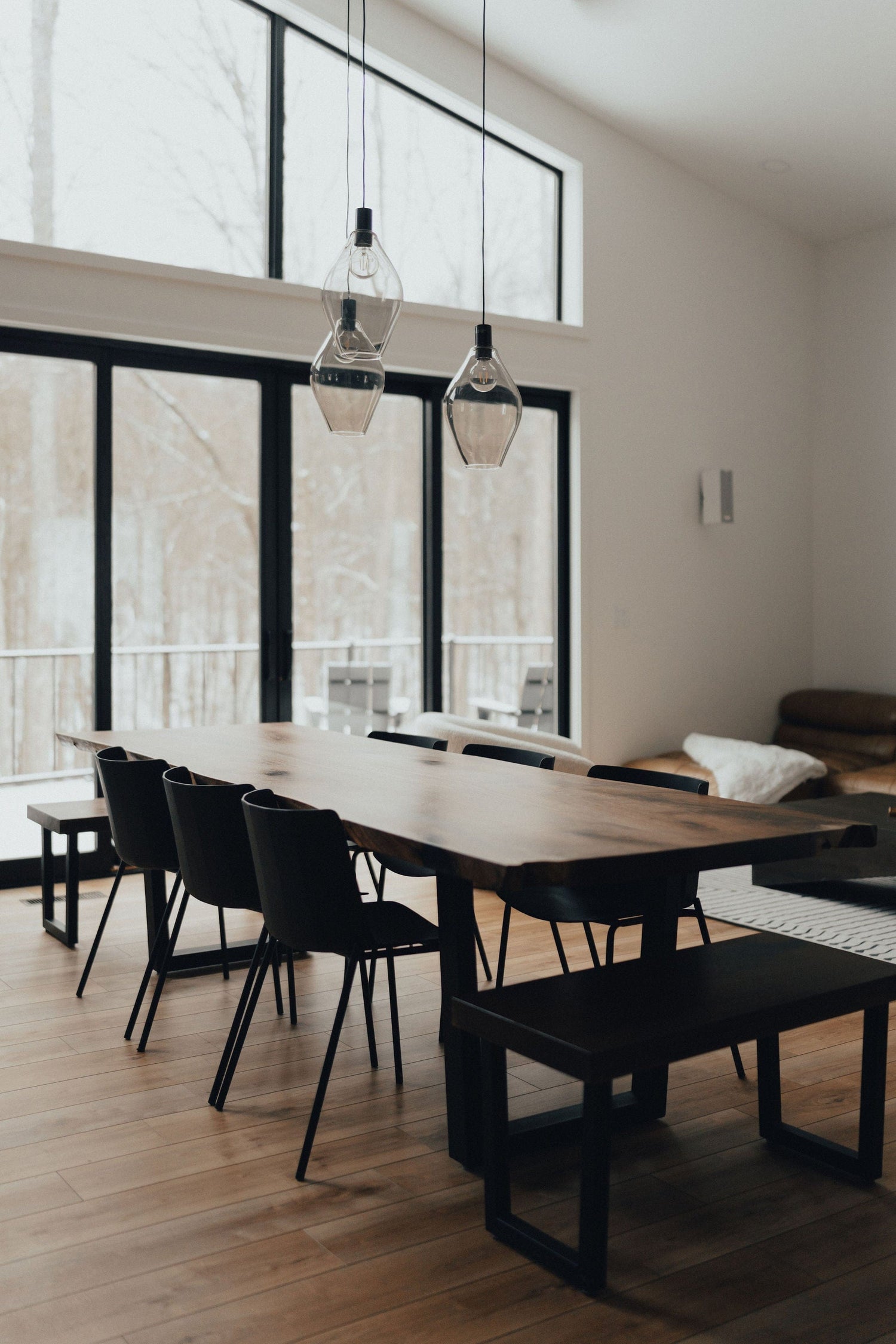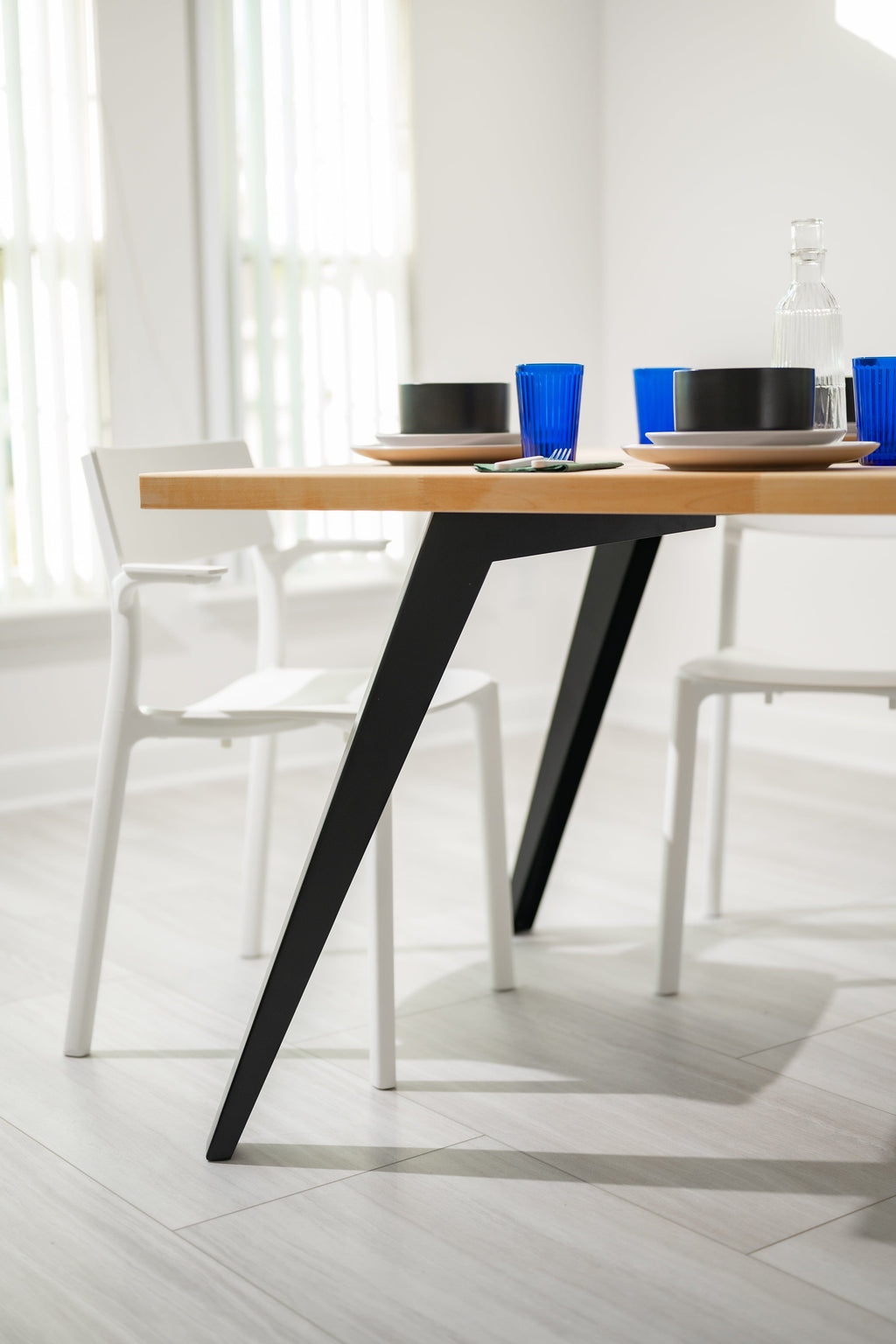Just How to Choose the Perfect Eating Space Table Legs for Your Home Design
Selecting the perfect eating room table legs is a nuanced process that requires cautious factor to consider of different aspects, including your space restrictions, visual choices, and practical requirements. The interaction in between styles, measurements, and products can considerably influence the ambiance of your eating location, making it essential to approach this choice systematically.
Assess Your Eating Area
Examining your eating space is vital for choosing the right table legs that match both aesthetics and functionality. Begin by measuring the dimensions of your eating area, including ceiling height, floor space, and proximity to other furnishings. This info will aid determine the appropriate size and elevation of your eating table, which straight affects the option of table legs.
Following, think about the design and design of your dining area. An open-concept style may benefit from table legs that offer aesthetic lightness, such as slim steel or acrylic choices. Alternatively, a much more conventional setting may call for strong wood legs that supply a sense of permanence.
Assess the existing color palette and materials in your dining area. Harmonizing the table legs with these elements produces a natural appearance that enhances the overall decoration.
Ultimately, a thorough analysis of your dining space will assist you in making an educated decision, ensuring that your table legs not only boost the aesthetic charm yet additionally serve functional functions.
Consider Your Design Preferences
When selecting dining-room table legs, it is necessary to review your individual design choices, as they significantly affect the overall aesthetic of your eating area. Your option of table legs can either enhance or comparison with existing décor, making it vital to straighten them with your recommended indoor style theme.
If your home leans in the direction of a contemporary visual, consider sleek metal or minimal wood legs that provide a tidy, uncluttered look. For a more traditional technique, luxuriant wood legs with intricate makings can include a touch of beauty and elegance. Industrial designs benefit from durable, basic materials such as redeemed wood and metal combinations, reflecting a sturdy beauty.
Furthermore, farmhouse and rustic designs usually favor strong, chunky legs that stimulate a feeling of warmth and convenience. Alternatively, if your decoration is eclectic, you might choose non-traditional shapes or a mix of products to create aesthetic passion.

Evaluate Product Options
The choice of product for dining area table legs plays a critical role in both toughness and visual appeal. Typical materials consist of timber, metal, and composite choices, each offering unique qualities that can affect the overall look and longevity of your table.
Wood is a classic selection, known for its warmth and flexibility. Hardwoods like oak and walnut give exceptional stamina and can be finished in numerous discolorations to match any kind of decor. However, softwoods like ache are extra susceptible to scratches and dents, making them less suitable for high-traffic areas.
Metal legs, usually crafted from steel or light weight aluminum, show modernity and industrial appeal. company website They are immune and highly resilient to wear, making them suitable for households with kids or constant celebrations (dining room table legs). Additionally, metal can be completed in numerous colors, enhancing the customization opportunities
Composite materials, such as MDF or laminate, deal cost and diverse designs. While generally less resilient than strong timber or metal, they can still offer a trendy appearance and are typically very easy to preserve.
Ultimately, the product you select should line up with your way of life, aesthetic choices, and the degree of use your table will experience.
Determine Elevation and Dimension
Selecting the suitable elevation and size for your dining space table is vital for both capability and comfort. The typical height for eating tables commonly varies from 28 to 30 inches, permitting sufficient legroom for most people when seated. It is vital to take into consideration the dimensions of your eating room and the types of chairs you intend to utilize.

In addition, take into consideration the proportions of your dining-room. A bigger table in a spacious area can create a grand atmosphere, while a smaller table works well in more intimate setups. Inevitably, the ideal elevation and dimension will certainly balance with your general decoration and enhance the dining experience for you and your guests.
Explore Personalization Possibilities

Additionally, the design of the legs can be customized to fit different designs, such as rustic, contemporary, or industrial. For example, conical legs can evoke a mid-century modern-day feel, while beefy, block-style legs might resonate with conventional or farmhouse design.
House owners can also discover shade coatings, from natural timber stains to repaint, enabling them to match or comparison Extra resources with the tabletop and bordering decor.
In addition, leg height can be adapted to accommodate particular seating arrangements or individual preferences, improving both convenience and performance.
Last but not least, distinct decorations, such as carvings or ornamental braces, can additionally personalize the table legs, making the eating experience not simply a statement however a dish piece in the home. By considering these personalization alternatives, property owners can produce a dining-room table read this that really mirrors their individuality.
Conclusion
Picking the excellent eating room table legs needs careful consideration of various aspects, including the measurements of the eating area, style preferences, material durability, and wanted elevation. Modification choices better boost the capability to accomplish a natural visual that complements the general design. By systematically assessing these components, house owners can make certain that the picked table legs not only accomplish functional requirements yet likewise contribute positively to the eating experience and setting of the home.
Picking the ideal dining room table legs is a nuanced procedure that calls for mindful factor to consider of numerous aspects, including your room restraints, visual preferences, and useful needs.Evaluating your dining space is crucial for picking the right table legs that enhance both visual appeals and functionality.When determining dimension, gauge the location where the table will be placed to guarantee it fits easily, permitting for at the very least 36 inches of clearance around the table for simple movement. A larger table in a sizable area can create a grand setting, while a smaller table works well in more intimate setups.Choosing the suitable eating area table legs calls for mindful consideration of various variables, including the dimensions of the eating space, design preferences, material longevity, and preferred height.